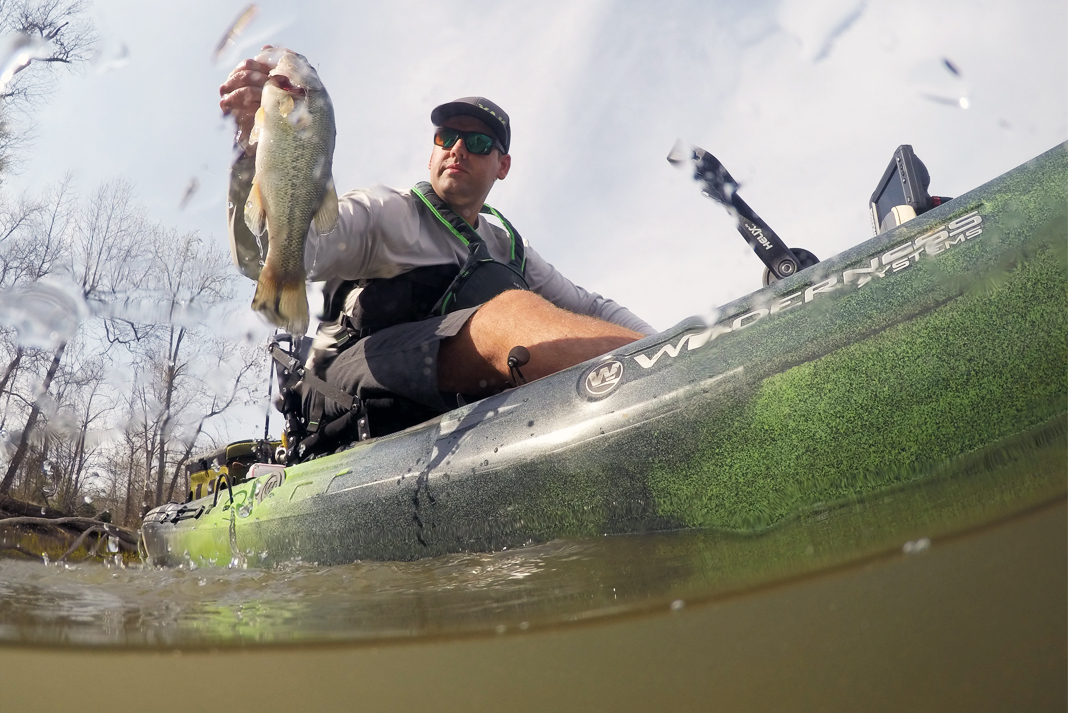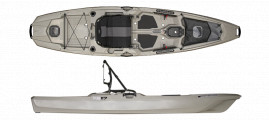Almost 50 years ago, southern California surfer and board-shaper Tim Niemier designed a surf ski with space to store gear and the sit-on-top kayak was born. Fast forward a decade, and Niemier had switched from hand-shaped fiberglass to rotomolded plastic with the intention to “put a billion butts in boats.”
Half a century later, his dream is nearly realized as kayak fishing is one of the fastest-growing segments of watersports. Without a doubt, the key to kayak fishing’s explosive popularity is the easy-to-use sit-on-top kayak.
Top picks: Best sit-on-top fishing kayaks for 2025
The following sit-on-top fishing kayaks have received the highest star ratings by reviewers in our Paddling Buyer’s Guide. See and review all sit-on-top fishing kayaks here.
Best Sit-On-Top Fishing Kayaks
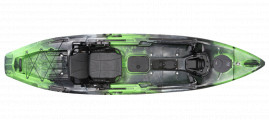
Radar 115 Fishing Kayak
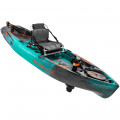
Sportsman PDL 106

Pescador Pilot 12.0

Recon 120 HD Fishing Kayak
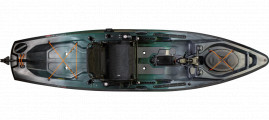
Topwater 120 PDL

Sportsman Salty PDL 120
Shop for sit-on-top fishing kayaks
Follow the links below to the Paddling Buyer’s Guide where you’ll find every sit-on-top fishing kayak available along with specs, prices, reviews and places to buy.
Shop by type
Tandem sit-on-top fishing kayak
Single sit-on-top fishing kayak
Sit-on-top ocean fishing kayak
Sit-on-top fishing kayak for rivers
Lightweight sit-on-top fishing kayak
Inflatable sit-on-top fishing kayak
Rigid sit-on-top fishing kayaks
Sit-on-top fishing kayak with trolling motor
Sit-on-top fishing kayak for big guys
Sit-on-top fishing kayak with motor
Shop by brand
Advanced Elements sit-on-top fishing kayaks
Ascend sit-on-top fishing kayaks
Aquaglide sit-on-top fishing kayaks
Eddyline sit-on-top fishing kayaks
Feelfree sit-on-top fishing kayaks
Hobie sit-on-top fishing kayaks
Jackson sit-on-top fishing kayaks
Jonny Boats sit-on-top fishing kayaks
Kaku sit-on-top fishing kayaks
Lifetime sit-on-top fishing kayaks
Native Watercraft sit-on-top fishing kayaks
Ocean sit-on-top fishing kayaks
Old Town sit-on-top fishing kayaks
Pelican sit-on-top fishing kayaks
Perception sit-on-top fishing kayaks
Santa Cruz sit-on-top fishing kayaks
Sea Eagle sit-on-top fishing kayaks
Sun Dolphin sit-on fishing kayaks
Vibe sit-on-top fishing kayaks
Viking sit-on-top fishing kayaks
Wilderness Systems sit-on-top fishing kayaks
Shop by size
Shop by store
Shop by price
Shopping for a used sit-on-top fishing kayak?
With years of development and dozens of manufacturers producing hundreds of models of sit-on-top kayaks, there are a lot of used boats on the market. As owners grow in the sport or change their focus or preferences, used kayaks go up for sale to make room for a new kayak in their garages.
A few words of caution before buying a used sit-on-top kayak.
Hull truth
Check the condition of the hull, especially around the bow and stern for damage from being dragged across the ground. Some scratches and even gouges are expected, but weak spots from thin plastic could lead to a leak. Look for cracks in the plastic, especially around the scuppers, seat base and pedal drive. These high-use areas are often weak because their complicated shapes can make it difficult for the plastic to fill the mold. Excessive fading is a sign the kayak has been left in the sun and the plastic may be brittle. Direct sunlight is plastic’s worst enemy, breaking down and weakening the material.
Seat time
The seat is the weakest link in a sit-on-top kayak. Inspect the seat for damage and excessive wear. One of the most common problems is sagging material that no longer supports the paddler. Make sure the seat properly fits the base and moves freely through positions.
Lemon law
The most important question to ask is why the previous owner is selling the kayak. It is very common for new anglers to purchase a cheap kayak and quickly realize that the boat isn’t comfortable, efficient and it doesn’t meet their needs. Don’t inherit another angler’s mistake. Read kayak reviews to make a list of high-quality kayaks from reputable brands that will last for years.
For more tips on what to look for when selecting a used fishing kayak, read our article How To Buy A Used Fishing Kayak.
Sit-on-top fishing kayak buying guide
With a sit-on-top kayak, as the name suggests, the paddler sits on top of the deck instead of inside a cockpit. Sit-on-top kayaks are generally more comfortable and user friendly. The open deck and elevated cockpit also offer more options for rigging with fishing gear and accessories.
The first thing to consider is size. The general rule is long and narrow kayaks go faster and straighter while short and wide kayaks are more stable and easier to maneuver.
Weight is another important consideration. Not only is a heavy kayak harder to paddle or pedal, but a big boat is more difficult to transport and store. However, a heavier kayak is usually more stable with a larger capacity to carry more gear than a smaller kayak.
Our advice is to use a 10- to 12-foot kayak with a 35- to 40-inch width for short trips in mostly sheltered water. The short waterline lets the kayak sneak into tight places and the wide beam is stable for standup fishing. To fish open water and paddle long distances, a 12- to 15-foot-long, 28- to 35-inch wide boat passes through the water with less resistance and is easier to paddle in a straight line.
Once the sit-on-top kayak’s length and width are matched to the intended use, it’s time to consider cockpit layout and features. A bow hatch is great for dry storage below deck, but a molded-in bow well is better to hold tackle boxes and gear you’ll need to access all day.
Sit-on-top kayaks come with two seat choices: elevated or low-profile. A low-profile seat offers a more ergonomic paddling position lower to the water with solid back support for paddling long distances. Low profile seats are also popular with anglers who cross the surf line or bounce down rocky rivers. If you fall out of the kayak, the low profile seat makes it easier to recover and re-enter the boat.
Elevated frame seats are popular for comfort and versatility. A frame seat sits higher off the deck with a wide bottom and back. Picture a lawn chair clamped onto the kayak. Some frame seats have two height positions. They are lowered for paddling and lifted to a higher position for fishing. An elevated seat makes standup fishing easier, too. Think of it like this: standing from a frame seat is like standing from a lawn chair. Getting up from a low-profile seat is like standing up from the floor.
A boat with gear tracks, bungees and mounting plates offers more options for rigging. Or, you can save some money by rigging the kayak yourself. Gear tracks are metal or plastic bars with a groove down the middle. To attach a rod holder, electronics base or other gadget, drop the T-bar on the compatible accessory base into the groove and tighten to hold the accessory to the boat. Bungees in the tankwell and bow-well secure gear and tackle boxes. Some boats have mounting plates to install an accessory base. The plate is stronger than the kayak’s plastic and replaceable so you’re not drilling holes directly into the kayak.
The best sit-on-top fishing kayaks are designed to accommodate electronics, lights and even motors or anchor systems. These boats have reinforced plastic in the stern and bow with inserts to hold the accessory. Some fishing kayaks have through-hull openings and routing below deck for cables and wires. To hold a fish finder transducer and cable, the best boats use a special scupper leading to a cavity in the bottom of the kayak.
The last consideration when choosing a kayak should be price. Savvy shoppers can find a high-quality, high-performance kayak for the right price. Of course, the $500 price tag on a basic kayak is tempting, but we recommend you don’t buy a cheap kayak that most likely won’t live up to your expectations. Focus your search on high-quality boats from reputable manufacturers with well-designed hulls and high-quality construction. Many premium manufacturers offer base models that share components and features with their higher-priced models. To weed out the worst kayaks, research reviews and comments from multiple sources to make a list of boats that meet your needs and your budget.
-
Sit-on vs sit-in kayak for fishing
When it comes to fishing, a sit-on-top kayak offers many advantages over a sit-inside kayak. Sit-on-top kayaks are generally wider (so more stable), more comfortable and more versatile than a similar sit-inside kayak.
The sit-in paddler sits inside the kayak, so he is closer to the water with less room for casting and working the lure. The sit-inside kayak’s cockpit is tighter with a smaller seat, so it’s not as spacious as a frame seat on a sit-on-top kayak.
The deck on a sit-inside kayak offers less space to mount accessories like rod holders and electronics. It’s easier to access gear and electronics on a sit-on-top kayak. And, the open deck on a sit-on-top offers more space to rig lures and land fish than the enclosed cockpit on a sit-inside.
Still, sit-inside kayaks are popular with anglers looking for a lighter kayak that is easier to paddle and offers protection from the elements. Sit-inside kayaks use less plastic than a sit-on-top, so a similar size sit-in will be lighter. The lightweight boat is popular with anglers looking to cartop their boat to the launch and carry the boat over a shoulder.
A sit-in paddler sits closer to the water so he can use a shorter paddle shaft and low-angle blade for a more powerful and efficient paddle stroke. In cold or rainy areas, hardy anglers appreciate the protection of sitting below the sit-inside kayak’s deck with a spray skirt to protect the cockpit from the elements.
Many anglers who are looking for these advantages choose a hybrid sit-inside kayak combining the wide hull of a sit-on-top kayak for more stability with a wider cockpit opening and elevated seat to improve comfort. Hybrid sit-inside kayaks have more space on the deck for accessories and gear. Sit-on-top kayaks are the first choice for most anglers, but paddlers looking for protection from the elements and a lower paddling position prefer a sit-inside.
Sit-on-top fishing kayak reviews
There’s no better way to choose a sit-on-top kayak than kicking the tires and taking a test drive. The staff at Kayak Angler, our sister magazine, have run the best sit-on-top fishing kayaks through the gauntlet. We’ve rigged the boats for fishing, loaded them with gear and hit the water.
Our testing includes miles of paddling and hours of fishing in a variety of conditions and locations. This allows us to evaluate how the boat handles and how it performs for the intended angler and conditions. If you can’t get to the paddle shop or a demo day, take a test drive with our review of the best sit-on-top fishing kayaks.
- Recreational Kayak Review: Wilderness Systems Tarpon 100
- Fishing Kayak Review: SeaStream Angler 120 PD
- Recreational Kayak Review: Ocean Kayak Frenzy
- Fishing Kayak Review: Sun Dolphin Journey 10
- Fishing Kayak Review: Ascend 12t
- Fishing Kayak Review: Sun Dolphin Boss 12 SS
- Fishing Kayak Review: Ascend 10t
- Fishing Kayak Review: Lifetime Tamarack Angler 100
- Fishing Kayak Review: Ascend 128t
- Fishing Kayak Review: Wilderness Systems Recon 120 HD



